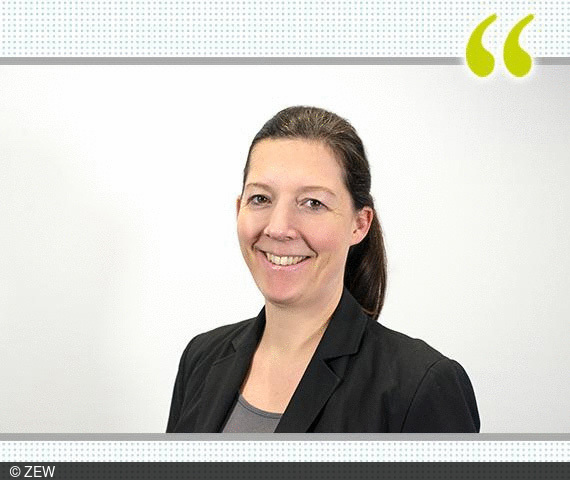“The Greatest Differences Between Men and Women Can Be Seen at the Leadership Level”
Questions & AnswersOn 12 November 1918, women received the right to vote in Germany. Today, 100 years later, their fight for equal rights continues, perhaps mostly noticeably in the workplace. Female quotas, pay gaps and flexible work models dominate the debate about how to create more equal opportunities for women. ZEW personnel economist Susanne Steffes takes a critical look at the current situation in Germany’s job market and at measures for the equal treatment of men and women.
What is the current employment situation in the German job market?
Over the past few decades, women have made enormous gains in the job market. According to Eurostat, the 2017 employment rate for women was 74 per cent, while for men it was 82 per cent. As for educational qualifications, the differences have vanished. Indeed, women often outperform men on this score. But large differences still exist in other areas. Men and women are frequently segregated into typically male and female professions, and male professions are better paid. This is one reason for the high gender pay gap. The average hourly wage of women in Germany is 21.5 per cent less than that of men. Another reason for the pay gap is that women work in part-time jobs more frequently and for longer periods than men, because they are more likely to pause their careers to have children. But the greatest differences between men and women can be seen at the leadership level. In one of our surveys, 32 per cent of men and only 14 per cent of women report to holding leadership positions.
Are female quotas a good idea?
At first glance, female quotas seem necessary if women are to have the same leadership opportunities as men. But the problem can’t be solved so easily. There are many reasons why women are more poorly represented in upper management echelons. One factor is certainly that careers often begin at an age when women typically start to have children, and the question is how able and willing they are to combine work and family. Moreover, according to some studies, women are more averse to risk and competition, so it is possible that many women do not want to pursue leadership roles in the first place – not under the present circumstances, at least. I believe that we must better study whether and how we can encourage more women to seek leadership positions. At the same time, we can’t forget that employers must also do more to promote women.
Are women less satisfied with their jobs than men?
No, one cannot say this generally. It is true that the women in our representative survey were less likely than men to find the formal rules and procedures for promotion to be fair, and women in leadership positions were less likely than men in leadership positions to report receiving fair compensation. But they also do not feel less fairly treated by their superiors and they do not differ from men in general job satisfaction.
What training opportunities do companies offer for professional development?
Women – especially those working in part-time or low-wage jobs – tend to take part in employer-provided training less frequently than men. But it is not always the employers that disadvantage women. Participating in training courses is also an individual decision. We are about to publish a study showing that highly qualified women in well-paying jobs take part more frequently in training courses on their own initiative and in their leisure time than male coworkers in comparable positions. This might be because women believe they need to show more engagement to have the same chances as men.
How does Germany compare with its European neighbours?
If we look at just the numbers, Germany is lagging behind in certain areas. According to Eurostat, the average pay gap between men and women in the EU is 16.2 per cent; in Germany it is 21.5 per cent. Only the Czech Republic and Estonia perform worse. When it comes to the female employment rate, by contrast, Germany is at 74 per cent, far above the EU average of 68 per cent. What is striking is that 37.5 per cent more women than men have part-time jobs. Only in the Netherlands and Switzerland is this discrepancy higher.
